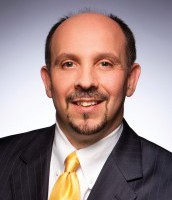Even in today’s digitized, algorithm-driven world, there’s a lot to be said for the do-it-yourself spirit. That drive—to blaze a trail, to shape a new tool or a work of art, to devise a unique solution for a particular problem—is deeply human, part of who we are. And it has enriched us all, in ways great and small.
Think about it. Without the D-I-Y spirit, entrepreneurs don’t exist. There’s no such thing as craft beer … or Etsy … or Amazon … or even the internet. All of these things, and thousands of other innovations that make modern life livable, spring from our creative core, our desire to strike out in new directions and make our own choices.
 Mind you, D-I-Y isn’t about going it alone. In fact, because humans are social animals, creation through collaboration is typically the most productive route. Two heads—in fact, many heads—are better than one, especially when we face complex or stubborn problems. We see that play out again and again in our daily lives. Neighbors rely on each other, not on distant institutions or government agencies, to get things done. Crowd-funding campaigns … grassroots movements … responses to natural disasters and the opioid crisis—D-I-Y drives all of these efforts.
Mind you, D-I-Y isn’t about going it alone. In fact, because humans are social animals, creation through collaboration is typically the most productive route. Two heads—in fact, many heads—are better than one, especially when we face complex or stubborn problems. We see that play out again and again in our daily lives. Neighbors rely on each other, not on distant institutions or government agencies, to get things done. Crowd-funding campaigns … grassroots movements … responses to natural disasters and the opioid crisis—D-I-Y drives all of these efforts.
And in cities and towns all over the nation, this same spirit is being harnessed to address an increasingly urgent need: the need for talent. Faced with a rapidly changing economy, communities coast to coast are pulling together to make sure their residents have the knowledge and skills they need—and ones that area employers demand.
Each locale has its own approach, but one thing is vital to all: the power of collaboration. For any site to succeed in developing home-grown talent, all of the relevant stakeholders matter, and all must work together. That includes area employers, workforce-development entities, local and state policymakers, philanthropic and community-based organizations, and educators at all levels—from pre-K to college and beyond.
Again, this type of cross-sector collaboration is happening across the country, with cities and towns leaning into the effort of boosting educational attainment among their residents. This issue of Focus magazine takes an up-close look at that trend by focusing on some of the best exemplars we know: the sites that we at Lumina Foundation call Talent Hubs.
The Talent Hub designation—conferred by Lumina, with support from The Kresge Foundation—signifies that a community has already made strides in increasing education attainment and is able to implement an ambitious talent-development plan. These are places that focus on completion, not just enrollment. They demonstrate strong local partnerships and an unwavering commitment to achieving racial and economic justice. They seek to address the long-term, holistic educational and employment needs of their residents. And they work at the systems level to create meaningful change in institutional, local, and state policy.
So far, there are 24 official Talent Hubs, and each one tackles the talent-development challenge in ways that work best for that community.
This issue of Focus highlights three of those singular sites:
- You’ll visit Detroit, a Rust Belt city undergoing an impressive rebirth after years of urban decay. Wayne State University is aiding that renaissance through a debt-forgiveness program that encourages students who have “stopped out” to return to school.
- You’ll travel to Indiana’s Elkhart County, where decidedly different cultures are combining—not clashing—for the common good. There, in the northern Indiana cities of Goshen and Elkhart, a progressive college founded by Mennonites works with RV-manufacturing firms to educate and empower the area’s growing number of Latino residents.
- And during a visit to the port city of Mobile, Alabama, you’ll see how several area colleges—formerly siloed competitors—are now working in concert. The goal, which is central to the identity of a campus-based advisor nicknamed “Pathway Bob,” is to help students find clear pathways to graduation, and on to good-paying local jobs.
All of the information in this issue of Focus is meant to serve one purpose: to encourage the D-I-Y spirit among local leaders all over this country. We want them—and our nation sorely needs them—to work together to develop and unleash the talent in their own backyards.
We at Lumina hope these real-life stories of community collaboration will inspire scores of cities and towns to write similar stories of their own.

Jamie P. Merisotis
President and CEO
